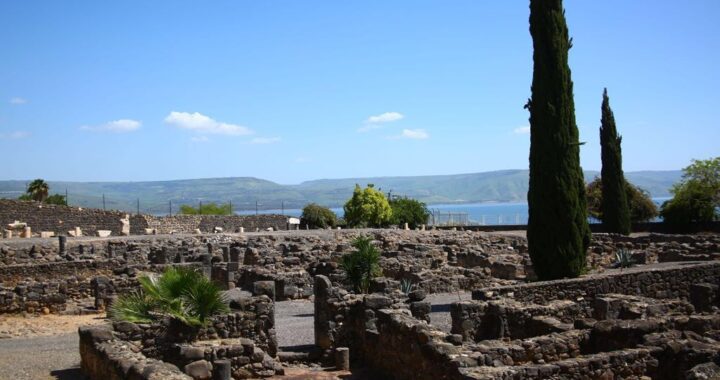A long time ago, Solomon opined that “of the making of many books there is no end” (Ecc. 12:12). If this was true in the 10th century before Christ, it is even more true in the 20 th century after Christ. Prompted by the volatile world situation, there is especially a proliferation of prophetic publications. Most books have little impact. Not so one recent book, The Pre-Wrath Rapture of the Church (Nashville: Thomas Nelson Publishers, 1990). This all-out attack on the pretribulational rapture position is making a splash on the theological scene.
I. The Significance of the Book
The book is first of all significant because of who wrote it. Marvin Rosenthal formerly served as the executive director of Friends of Israel Gospel Ministry. Many of us have been blessed by his writing and teaching ministry. For 35 years he has been an advocate of the pretribulational rapture position. Under the prodding of a friend he began to re-examine his view of the rapture position. Now he repudiates his former position in his 371-page book.
The book is further significant in that Rosenthal makes the following dogmatic prediction concerning his novel position:
“Within two years many men will be teaching the pre-wrath Rapture. Within five years it will be a recognized position. And, if God pleases, within 15 years it will become a major position of the believing church—” (p. 293).
One is inclined to agree with Gerald Stanton who “questions the validity of that ambition and the necessity of adding a fifth position to an already overcrowded rapture debate” (“A Review of The Pre-Wrath Rapture of the Church,” Bibliotheca Sacra, January—March 1991, p. 90).
Rosenthal has started another faith mission, Zion’s Hope, with its own publication, Zion’s Fire. Through the book, the new magazine and prophetic conferences, the “Pre-wrath Rapture” position seems to be disseminated with a real missionary zeal among pastors.
II. The Spirit of the Book
When the book was first published, Rosenthal advertised widely in a flyer as a volume that “dares to challenge unsubstantiated prophetic assumptions, worn-out sterile clichés, and blind allegiance to a teacher, study Bible, or system of interpretation.” The new position would avoid “parroting the past.” These none-too-subtle criticisms focus, needless to say, on the pretribulational rapture position, the Scofield Reference Bible, and the men of Dallas Theological Seminary, who have written widely on the Rapture.
Walvoord, Ryrie, and Pentecost are especially singled out. Acknowledging that he has benefited much from these men, Rosenthal, who claims to “write as a lover from within the pretribulation camp,” (p. 33) are used. The pretrib. position is beset with “impossible-to-resolve problems” (p. 197) and “insurmountable exegetical” difficulties (p. 147). Even worse, the pretribulational teaching leads to “calamitous” consequences and “a spiritual catastrophe” which is in reality “a satanically planned sneak attack” (p. 281-282). With such scathing attacks, Zion’s Fire seems to be appropriately named.
In contrast, Rosenthal asserts that his position is “unstrained and biblically accurate” (p. 194), his “evidence is strong and compelling, the reason clear and logical” (p. 67). His view on the rapture he characterizes as one of “simplicity, clarity, logic, the fruit of an unstrained, clear, unified and normative interpretation of the Word of God.” (p. 31).
No wonder Stanton observes that it is this type of “dogmatism that earns the book a unique place in the literature of the rapture debate” (p. 93).
III. The Substance of the Book
The basic thesis of the book is that the Church will be removed from the earth by the rapture just before the fourth quarter of the 70th Week of Daniel. Rosenthal divides Daniel’s 70th Week into three distinct periods: “The Beginning of Sorrows,” lasting 3 ½ years, the “Great Tribulation,” involving the first half of the last 3 ½ years or 21 months, followed by the Day of the Lord, spanning the second half of the 3 ½ years or final 21 months. Rosenthal belabors the point that the rapture will be after the Great Tribulation and before the Day of the Lord, the time of God’s wrath, which begins with the opening of the seventh seal (Rev. 8:1, pp. 60, 61).
In Rosenthal’s scheme, the Church must endure Antichrist, the Great Tribulation, and after 64 months into the 70th Week, it will be raptured. This destroys totally the doctrine of imminency, which Rosenthal calls “untenable.” That imminency is false is a “crucial, clear, unassailable truth that cannot be dismissed” (p. 150 italics in the original). He writes off Walvoord’s book The Rapture Question as being totally useless in the debate because “there simply is no exegetical evidence for pretribulational rapturism” (p. 208).
IV. The Shortcomings of the Book
For Rosenthal, the blessed hope is that the believer should be willing to suffer and die under Antichrist, but if he survives, he will be delivered from God’s final wrath (p. 34, 35). Pisani, writing a thoughtful refutation of Rosenthal, well concludes: “judgment and death may motivate the masochist, but the prospect of enduring even a portion of the coming tribulation does little to encourage the majority of Christ’s saints (“Pre-Wrath Rapture or Modified Postribulationaism?” Baptist Bulletin, December 1990, p. 23).
Ertle, in his helpful review of Rosenthal’s book, rightly laments Rosenthal’s denial of imminency: “We are bidden rather to look for the Antichrist and his Midtribulational desecration of the Jewish Temple; then we may put on our white robes of expectancy” (Baptist Bulletin, September 1990, p. 40).
In contrast, passages like 1 Thess. 5:6; 1 Cor. 1:7; Tit. 2:13 and 1 Jn. 3:2–3 speak of the blessed hope as an imminent event, encouraging the believer to live a life of eager expectancy. With annoying dogmatism, Rosenthal insists that the restrainer of 2 Thessalonians 2 is the archangel Michael. On this “the Bible is explicit” (p. 257). Evidence that the restrainer could be human government or the Holy Spirit “is strained” (p. 256).
Rosenthal has no clear explanation where the Church will be for 21 months after the rapture. It definitely will not be in heaven in his scheme of events. His position, like that of the postribulational view is obviously untenable in light of John 14:1–4, one of the key rapture passages. Christ promised that He would leave His own on earth to prepare their eternal habitation in heaven, in the Father’s House. Then He would return for them and take them to the prepared place. The view of Rosenthal and that of the postribulationalists preclude that the believers will ever be in heaven. In other words, they do not believe Christ’s clear statement. No wonder Rosenthal has absolutely nothing to say about John 14:1–4. He simply quotes John A. Sproul, who lists John 14 among “debatable Scriptures” (p. 55).
Rosenthal compares his position to the house build on the rock, since it is established on “irrefutable logic” (p. 107) and “will never see its basic tenants successfully assaulted” (p. 293). In short, his main arguments are “impregnable” (p. 155). Or are they?
Rosenthal insists that “perhaps the single greatest error” of the pretribulational position is that the Day of the Lord and thus the period of God’s wrath commences when Daniel’s 70th week begins (p. 117).
Renald Showers wrote an important 47-page analysis of every major issue raised by Rosenthal. Showers demonstrates that all seven seals, not just the last two, are part of God’s wrath from which the Church is exempt (1 Thess. 1:10; 5:9; Rom. 5:9) (The Pretribulation Rapture, The Friends of Israel Gospel Ministry, Inc., P.O. Box 908, Bellmawr, NJ 08099).
Under the searching analysis by Paul Karleen, the “impregnable” and “irrefutable” pre-wrath rapture position crumbles. His book is a must for those interested in the issues raised by Rosenthal. It is entitled, The Pre-Wrath Rapture of the Church: Is It Biblical? (BF Press, P.O. Box L-601, Langhorne, PA 19047, 102 pp). Karleen does not primarily defend the pretrib position but shows that every major point Rosenthal makes is seriously flawed. He refutes that which is supposedly irrefutable by pointing out the errors in “facts, language, context and logic” (p. 11). Two cases in point. Rosenthal limits the Day of the Lord to 21 months, one reason being that the prophets spoke of the Day of the Lord, using a definite article. In fact, not once in the 18 OT usages of the Day of the Lord is the definite article used in the Hebrew. A close study of the biblical usage of the Day of the Lord indicates that it includes a time of judgment (the Tribulation period) and a time of blessing, the Millennium (Zeph. 3:8–13; Hag. 2:6–23; Zech. 14:1–10). If it can be demonstrated that the Day of the Lord covers more than 42 months—and it can—the pre-wrath position falls.
Rosenthal claims that the time of wrath starts immediately after the rapture. As proof he uses the illustration of Noah. The day Noah and his family entered the ark, “on the same day” God’s judgment fell (pp. 196, 220). The fact is, the flood did not start on the day that Noah entered the ark, but seven days later (Genesis 7:10). Rosenthal’s book contains numerous such errors.
Stanton and Showers show the validity of the pre-tribulational rapture position. Karleen shows the error and illogic of the new theory. He has summarized his devastating critique in an article in Voice, Jan.—Feb. 1991, “Evaluating The Pre-Wrath Rapture of the Church,” pp. 9–13. The Church may confidently expect the return of the Bridegroom at any moment, not at some predictable date after being persecuted by the Antichrist for 63 months.

Dr. Manfred Kober
Dr. Manfred Kober (Th.M. and Th.D., Dallas Theological Seminary) is a German-born theologian and educator who has significantly contributed to Christian scholarship and ministry. After enduring the hardships of post-war Germany, he emigrated to the United States in 1953. Dr. Kober pursued theological studies at Baptist Bible Seminary in Johnson City, New York, the University of Erlangen in Germany, and Dallas Theological Seminary.
He served as a professor and chaired the Department of Theology at Faith Baptist Bible College in Ankeny, Iowa, from 1969 to 1999. Today, he resides in Bondurant, IA, with his wife, Sharon, and they have two children and three grandchildren.


